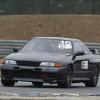R32 Gts4-t Information?
Announcements
-
Similar Content
-
Latest Posts
-
Nope, still smaller rear, put on the 4inch exhaust and picked up power everywhere, ended up just shy of 800rwhp. Didn't seem to be hitting any walls either, so perhaps could have pushed for more but all maybes and the fish that got away etc etc.
-
Ha ha ha, mine loves to spend, all on the dogs (they're our kids, and her spending would likely rival that of some people raising children!) the only benefit is, her spending is tax deductible as she runs a business in the dog industry 😛 The above all means she can spend race car budget quicker than I can. 😛 That and a lot of the things I want are very expensive, and I can be a bit "you want how much for that?!" And at other times overly impulsive. Or I start the w days of research, get to day 1.5 and get really annoyed that no one will advertise actual specifics and it's just marketting BS and I go "well, now I don't want anything to do with that now!" Also I hate paying lots of money for something I can make from $50 in materials. Then I get the shits halfway through making things and wonder why others who just buy parts have more fun... 😛






Recommended Posts
Create an account or sign in to comment
You need to be a member in order to leave a comment
Create an account
Sign up for a new account in our community. It's easy!
Register a new accountSign in
Already have an account? Sign in here.
Sign In Now